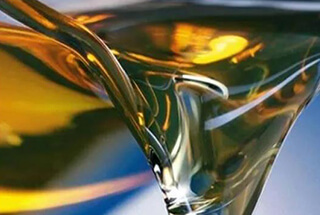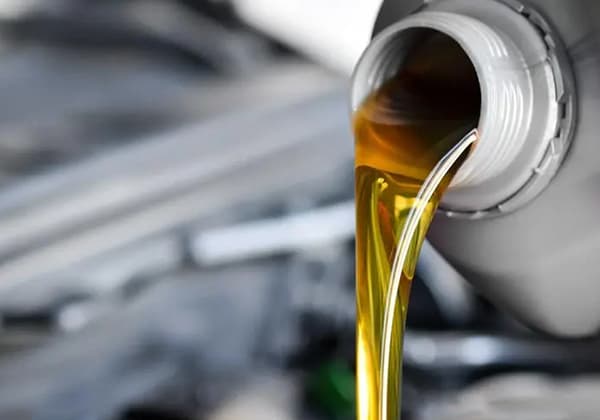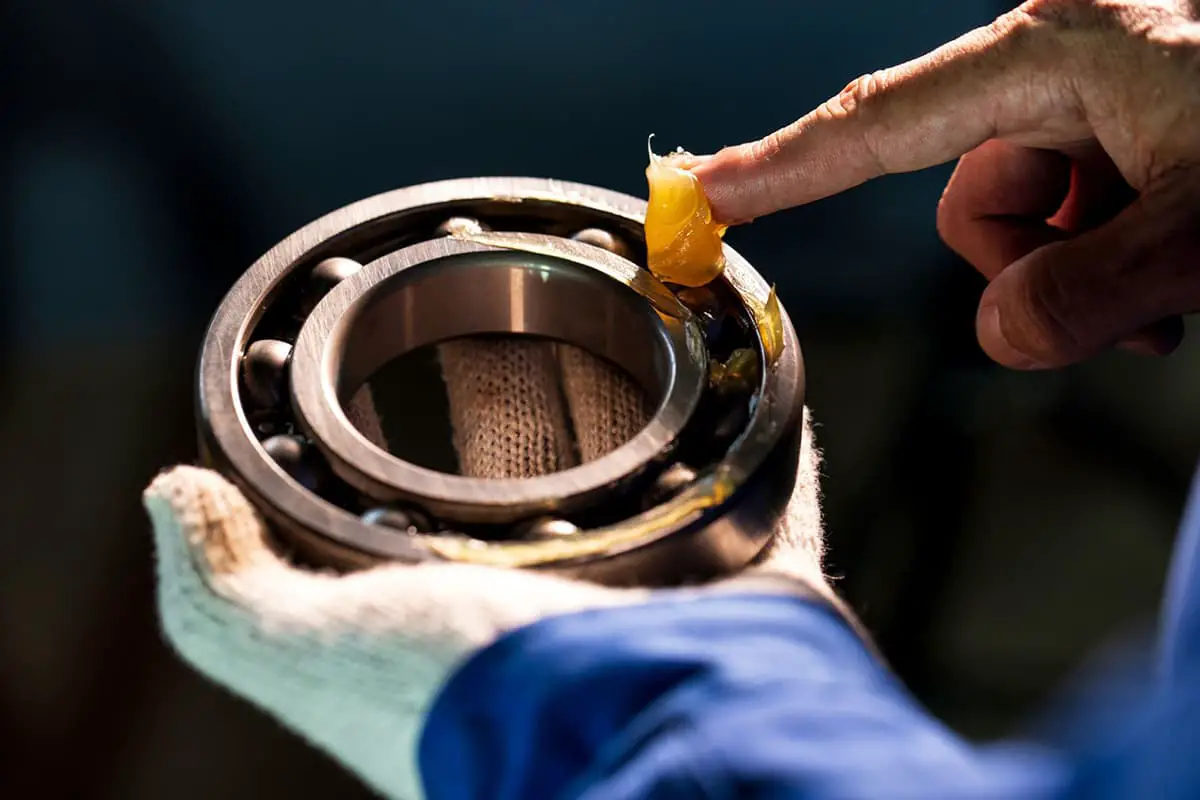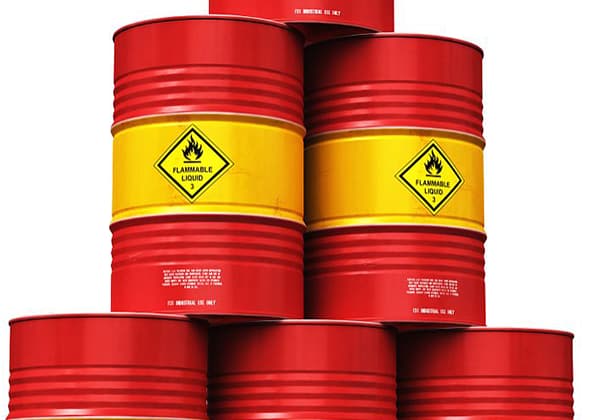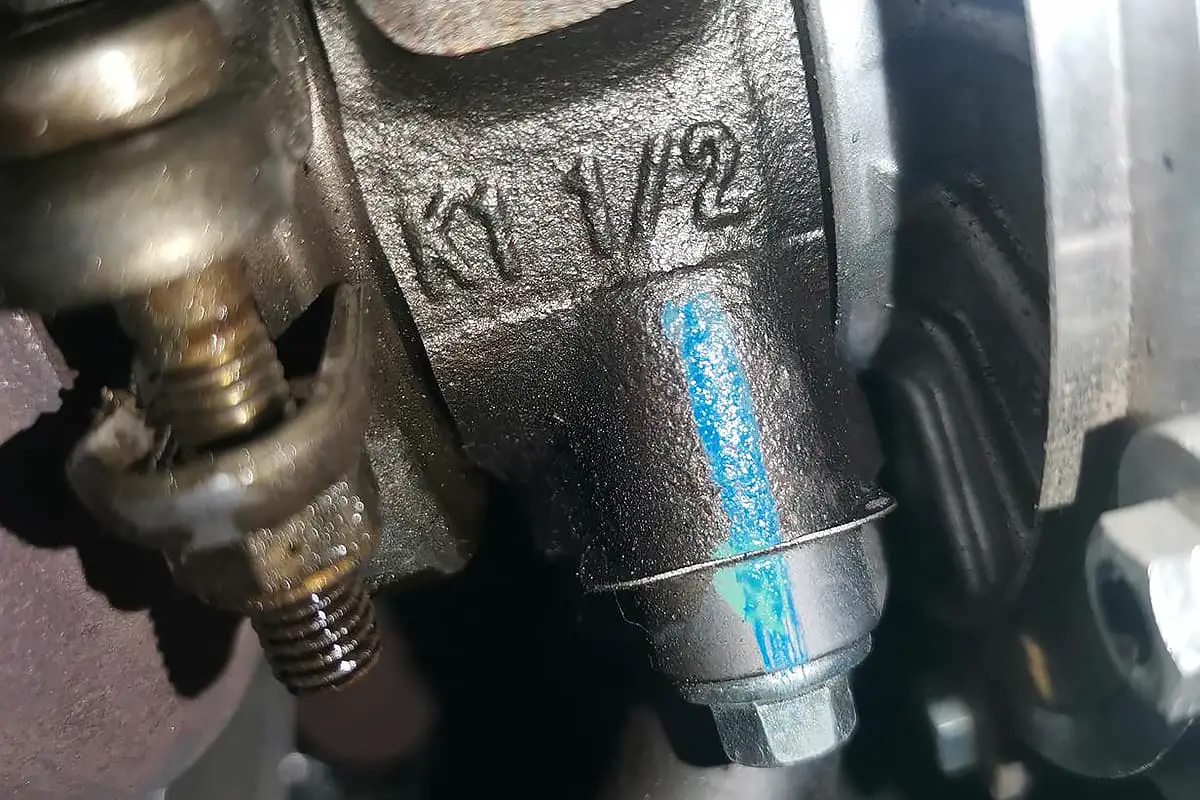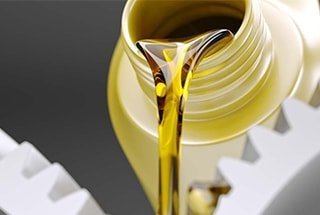
Have you ever wondered what keeps your car’s engine running smoothly? Lubricating oil plays a crucial role in reducing friction and wear, but there’s more to it than meets the eye. In this blog post, we’ll dive into the basic properties of lubricating oil, as explained by a seasoned mechanical engineer. Discover the complex mixture of hydrocarbons that make up this essential fluid and learn how its physical and chemical properties contribute to its performance.
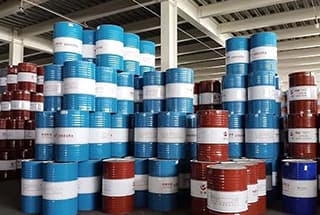
Lubricating oil is a technically advanced product composed of a complex mixture of hydrocarbons. Its actual performance is the result of multiple physical and chemical changes taking place simultaneously.
The properties of lubricating oil encompass both general and special physical and chemical properties, as well as the results of simulation bench tests.
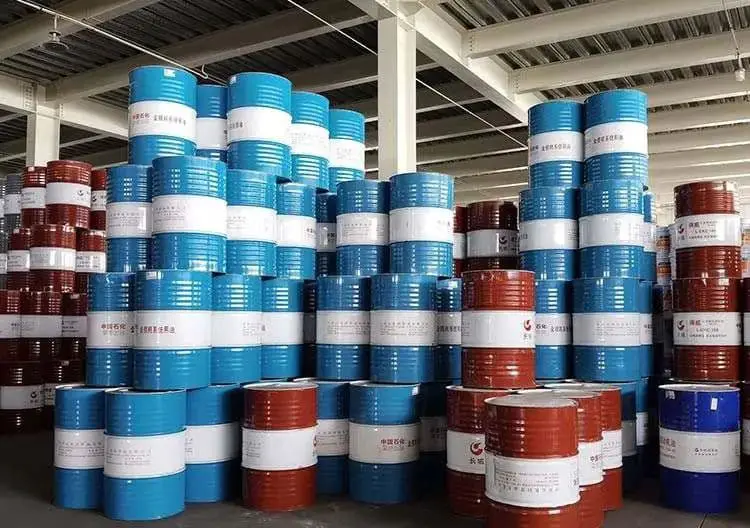
Each type of lubricating grease has specific general physical and chemical properties that are indicative of its internal quality.
The general physical and chemical properties of lubricating oil are as follows:
The color of an oil product can often indicate its refining level and stability. Higher refining levels result in the removal of hydrocarbon oxides and sulfides, leading to a lighter color.
However, even if the refining process is identical, the color and clarity of base oils produced from different crude oil sources and genera may vary.
For newly produced lubricating oil, the addition of additives negates the significance of color as an indicator of the refining level of the base oil.
Density is a simple and widely used physical property of lubricating oil.
The density of lubricating oil increases with an increase in its carbon, oxygen, and sulfur content.
Therefore, under the same viscosity or molecular weight, lubricating oil with a higher proportion of aromatics, colloids, and asphaltenes will have the highest density. Lubricating oil with more cycloalkanes will have a moderate density, while lubricating oil with more alkanes will have the lowest density.
Viscosity is a measure of the internal friction of oil products and it reflects the oiliness and fluidity of the product.
Without the addition of functional additives, higher viscosity usually corresponds to a stronger oil film but poorer fluidity.
The flash point is a measure of the evaporation rate of oil. The lighter the fraction of oil, the higher its evaporation rate and the lower its flash point. Conversely, heavier fractions of oil have lower evaporation rates and higher flash points.
The flash point is also an indicator of the fire risk of petroleum products. The danger level of oil products is determined based on their flash point. Products with flash points below 45°C are considered flammable, while those with flash points above 45°C are considered non-flammable.
It is strictly prohibited to heat oil products to their flash point temperature during storage and transportation.
In general, higher flash points are preferred, especially when choosing lubricating oil based on operating temperature and working conditions. A flash point that is 20 to 30°C higher than the operating temperature is considered safe for use.
The freezing point refers to the maximum temperature at which the oil stops flowing under specific cooling conditions.
The solidification of oil products is distinct from that of pure compounds and there is no set solidification temperature for oil products. Rather, “solidification” only refers to a loss of fluidity as a whole, as not all components become solid.
The freezing point of lubricating oil is a crucial quality index that indicates its low-temperature fluidity. It is important for production, transportation, and use. Lubricating oil with a high freezing point cannot be used in low temperature environments, while low freezing point oil is unnecessary in high temperature areas as it increases production cost.
Typically, the freezing point of lubricating oil should be 5 to 7°C lower than the minimum operating temperature. However, it’s important to consider the freezing point, low-temperature viscosity, and viscosity temperature characteristics of the oil when choosing low-temperature lubricating oil. Oil with a low pour point may not have the desired low-temperature viscosity and viscosity temperature characteristics.
The freezing point and pour point are both indicators of the low-temperature fluidity of oil products, but the determination methods are slightly different. While the pour point and freezing point of the same oil are not always equal, the pour point is usually 2 to 3°C higher than the freezing point, though there are exceptions.
The acid value is a measure of the presence of acidic substances in lubricating oil and is expressed in units of mgKOH/g. It can be broken down into strong and weak acid values, with the combination of the two referred to as the total acid value (TAN). When referring to “acid value,” it typically means “total acid value (TAN).”
The alkali value is an indicator of the amount of alkaline substances in lubricating oil and is expressed in units of mgKOH/g. It can also be divided into strong and weak alkali values, with the combination of the two referred to as the total alkali value (TBN). When referring to “alkali value,” it typically means “total alkali value (TBN).”
The neutralization value encompasses both the total acid value and total base value, but unless otherwise specified, “neutralization value” typically refers to “total acid value” and is expressed in units of mgKOH/g.
The water content refers to the percentage of water in lubricating oil, typically expressed by weight.
The presence of water in lubricating oil can disrupt the oil film and negatively impact lubrication. It also accelerates corrosion from organic acids on metal surfaces, causing equipment to rust and increasing the risk of sedimentation.
In summary, the lower the water content in lubricating oil, the better.
Mechanical impurities refer to insoluble precipitates or colloidal suspensions in lubricating oil that cannot be dissolved in solvents such as gasoline, ethanol, and benzene.
These impurities often consist of sand and iron filings, as well as some organic metal salts brought in by additives that are difficult to dissolve in solvents.
In general, the mechanical impurities of lubricating oil base oil should be kept below 0.005% (a level of 0.005% or lower is considered as absent).
Ash refers to the non-combustible substances that remain after burning under specific conditions.
Ash typically consists of metal elements and their salts.
The concept of ash can vary for different oil products. For base oil or oil products without additives, ash can be used to assess the refining depth of the product. For oil products with metal salt additives, ash serves as a means of quantifying the amount of additives added.
In some foreign countries, sulfuric acid ash is used as a substitute for ash. This involves adding a small amount of concentrated sulfuric acid to the oil sample after burning but before it is ashed, converting the metal elements of the additive into sulfate.
Under the specified experimental conditions, the black residue that forms after the heated evaporation and combustion of oil products is referred to as Carbon Residue.
Carbon Residue is an essential quality index for lubricating oil base oil, used to determine its nature and refining depth.
The amount of Carbon Residue in lubricating oil base oil is influenced not only by its chemical composition but also by the refining depth of the oil.
The main components that contribute to Carbon Residue in lubricating oil are gum, asphaltene, and polycyclic aromatic hydrocarbons.
Under conditions of insufficient air, these substances undergo intense thermal decomposition and condensation, leading to the formation of Carbon Residue.
Typically, the deeper the refining depth of the oil, the lower the Carbon Residue value.
As a general rule, the lower the Carbon Residue value of the base oil, the better its quality.
However, many oil products now contain additives of metal, sulfur, phosphorus, and nitrogen elements, which result in high Carbon Residue values.
Therefore, the Carbon Residue of additive oil no longer holds its original significance in determining the quality of the oil.
Mechanical impurities, moisture, ash, and Carbon Residue are quality indicators that reflect the purity of oil products and the refining depth of lubricating base oil.
In addition to the general physical and chemical properties, each lubricating oil should also possess specific physical and chemical properties that characterize its usage characteristics.
The higher the quality requirements or the more specific the application of the oil, the more pronounced its unique physical and chemical properties become.
The following are brief introductions to the test methods that reflect these special physical and chemical properties:
Oxidation stability refers to the anti-aging performance of lubricants.
For industrial lubricants with long service lives, this index is a requirement and has become a specific performance requirement for these types of oils.
There are numerous methods to determine the oxidation stability of oil products.
Essentially, a specified amount of oil is subjected to oxidation at a specific temperature for a set amount of time in the presence of air (or oxygen) and metal catalysts. The resulting acid value, viscosity change, and sediment formation of the oil are then measured.
All lubricants have varying tendencies towards automatic oxidation, depending on their chemical composition and external conditions.
With use, oxidation takes place and some substances such as aldehydes, ketones, acids, colloids, asphaltenes, and others are gradually generated.
Oxidation stability is the performance of inhibiting the formation of these substances, which are detrimental to the usability of the oil products.
Thermal stability quality refers to the high-temperature resistance of oil products, or the ability of lubricating oil to resist thermal decomposition, specifically, the thermal decomposition temperature.
Some high-quality anti-wear hydraulic oils and compressor oils have established requirements for thermal stability.
The thermal stability of oil products primarily depends on the composition of the base oil.
Many additives with low decomposition temperatures can have a negative impact on the stability of oil products.
Antioxidants cannot significantly enhance the thermal stability of oil products.
Oiliness refers to the ability of polar substances in lubricating oil to form a solid physical and chemical adsorption film on the metal surface of the friction parts, providing resistance to high loads and reducing friction and wear.
Extreme pressure refers to the decomposition of polar substances in lubricating oil on the metal surface of the friction parts under high temperature and high load, resulting in a reaction with the surface metal to form a soft (or plastic) extreme pressure film with a low melting point.
This film provides lubrication and resistance to impacts, high loads, and high temperatures.
Oxidation of oil or the effects of additives can often lead to corrosion of steel and other non-ferrous metals.
A typical corrosion test involves placing a red copper bar in oil and exposing it to 100 ℃ for 3 hours, followed by observation of any changes in the copper.
Another test for corrosion resistance is performed by exposing steel surfaces to rusting under the action of water and steam.
The determination of rust resistance involves adding 30ml of distilled water or artificial seawater to 300ml of test oil and then placing a steel bar in the mixture, stirring it at 54 ℃ for 24 hours and observing whether the steel bar has corroded.
Oil products should have the ability to resist metal corrosion and rust. These two properties are usually tested and required in industrial lubricant standards.
During the operation of lubricating oil, the presence of air often leads to the formation of foam, especially when the oil contains surface-active additives. Foam is difficult to dissipate and its formation can have negative consequences.
The generation of foam in lubricating oil can destroy the oil film, cause sintering of the friction surface or increase wear, accelerate the oxidation and deterioration of the lubricating oil, and increase air resistance in the lubrication system, affecting the circulation of lubricating oil. Hence, anti-foaming is a crucial quality index for lubricating oil.
Hydrolytic stability describes the stability of oil when exposed to water and metals (mainly copper).
If the oil has a high acid value or contains additives that easily decompose into acidic substances upon contact with water, this index is often unsatisfactory.
The measurement method involves adding a specified amount of water to the test oil, mixing and stirring the copper strip at a certain temperature for a set amount of time, and then measuring the acid value of the water layer and the weight loss of the copper strip.
In industrial use, lubricating oil is often mixed with some cooling water.
If the lubricating oil has poor anti-emulsifying properties, it will form an emulsion with the mixed water, making it difficult for the water to separate and discharge from the bottom of the circulating oil tank, leading to poor lubrication.
Therefore, demulsibility is a crucial physical and chemical property of industrial lubricants.
Typically, 40ml of test oil and 40ml of distilled water are vigorously stirred at a specific temperature for a set amount of time, and then the separation time of the oil layer, water layer, and emulsion layer into 40-37-3ml is observed.
For industrial gear oil, the test involves mixing the oil with water, stirring it for 5 minutes at a specific temperature and 6000 rpm, allowing it to sit for 5 hours, and then measuring the milliliters of oil, water, and emulsion layer.
The hydraulic oil standard requires the oil to have good air release properties, as in hydraulic systems, if the air dissolved in the oil is not released in a timely manner, it can impact the accuracy and sensitivity of hydraulic transmission and in severe cases, fail to meet the requirements of the hydraulic system.
The method of measuring this property is similar to that of anti-foaming, but it measures the release time of air (MIST) dissolved in the oil.
In hydraulic systems, rubber is commonly used as seals.
Oil products in machinery inevitably come into contact with some seals.
Oil products with poor compatibility with rubber can cause swelling, shrinkage, hardening, and cracking, affecting its sealing ability.
As a result, it is necessary for oil products to have good compatibility with rubber.
The hydraulic oil standard requires a rubber sealing index, which is determined by observing the change in size of a rubber ring after being soaked in oil for a specified amount of time.
During the use of oil with tackifiers, mechanical shear can cause the high molecular polymer in the oil to break down, reducing its viscosity and impairing normal lubrication.
As a result, shear stability is a crucial physical and chemical property that must be tested for this type of oil.
There are numerous methods to determine shear stability, including ultrasonic shear method, nozzle shear method, Vickers pump shear method, and FZG gear wheel shear method.
These methods ultimately measure the decline rate of the oil’s viscosity.
Solubility is often measured by the aniline point.
Different grades of oil have varying aniline points, which represent the limit of solubility for composite additives. The limit value for low ash oil is higher than that of peralkaline oil, and the limit value for single-stage oil is higher than that of multi-stage oil.
The volatility of the base oil affects fuel consumption, viscosity stability, and oxidation stability.
These properties are especially crucial for multi-stage oils and energy-saving oils.
This refers to the specific physical and chemical properties of anti-rust grease.
Its test methods include the humidity test, salt spray test, lamination test, water displacement test, as well as the shutter box test, long-term storage test, etc.
Electrical performance is a unique characteristic of insulating oil, primarily consisting of dielectric loss angle, dielectric constant, breakdown voltage, pulse voltage, etc.
The refining depth, impurities, and moisture of the base oil significantly impact the electrical performance of oil products.
In addition to the general physical and chemical properties of lubricating grease, specialized grease has its own specific physical and chemical properties.
For instance, grease with good water resistance requires a water drenching test;
Low temperature grease must undergo a low temperature torque test;
Multi-purpose grease must be tested for extreme pressure wear resistance and rust resistance;
Long-life grease must undergo a bearing life test.
There are corresponding test methods for determining these properties.
In addition to general performance, each oil product should have its own unique special performance.
For instance, the cooling rate of quenching oil must be measured;
Emulsified oil must undergo a test for emulsion stability;
The anti-creep coefficient must be measured for hydraulic guide rail oil;
Spray lubricating oil must be tested for oil mist diffusivity;
The coagulation point of refrigerant oil must be determined;
Low temperature gear oil must be tested for the formation of the pour point, etc. These characteristics require a special chemical composition of the base oil or specific additives to ensure.

Abrasive Wear: Mechanical wear caused by the sliding of two contact surfaces in relative motion.
Additive: A small quantity of substances added to enhance lubrication performance.
Adhesion Improver: Additives added to oil and grease to improve adhesion, such as polyisobutylene.
Adhesion Lubricant: A lubricant containing an adhesion modifier to prevent it from falling off due to centrifugal force.
AF Coating (Antifriction Coating): The most widely used dry film solid lubricant, which can be cured at room temperature or with heat. The formula consists of solid lubricating materials (known as “raw materials”) and bonding materials, see “Binder.”
Anti-Aging: Aging of materials caused by factors such as oxidation, overheating, or the presence of certain metals (e.g. copper, lead, silver). The aging resistance of materials can be improved by adding additives such as antioxidants.
ASTM: American Society for Testing and Materials.
Base Oil: The fundamental components of lubricating oil and grease.
Binder: A non-volatile medium or excipient used to improve the bond between solid lubricating material particles or enhance the adhesion between the solid lubricating film and the friction surface.
Loosening Torque: The force required to loosen a bolt connection.
Chemical Inertness: A lubricant that does not react with certain substances.
Friction Coefficient: The ratio of friction force to normal force between two contact surfaces.
Low Temperature Performance: Cloud point, pour point, and freezing point are used to assess the performance of lubricating oil, while Kesternich flow pressure and low temperature torque tests can be used to measure lubricating grease.
Colloid: Particles in a stable liquid with a size ranging from 10^-5 to 10^-7 cm, used as a solution without particle sedimentation.
Compound Grease: Lubricating grease made with a thickener of metal soap and various acids, especially suitable for high temperature and long-term use.
Consistency: An index of lubricating grease that is divided into non-working cone penetration and working cone penetration and is measured according to the NLGI (National Lubricating Grease Institute) standard.
Simply divide the consistency into nine grades, such as:
| Consistency grade | Working taper (1/10mm) |
| 00 | #:400-430 |
| 0 | #:350—385 |
| 1 | #:310—340 |
| 2 | #:265—295 |
Density: The mass of the lubricant per unit volume at 20°C, expressed in g/cm3.
Detergents: Surfactants that remove surface residue and sediment.
Dispersibility: Improves the dispersibility of insoluble substances in a liquid.
DN Value: A reference value for the speed of rotating rolling bearing grease, expressed as the bearing pitch diameter (mm) multiplied by revolutions per minute.
Drip Point: The temperature at which the lubricating grease changes from a semi-solid state to a liquid state, indicating the heat resistance of the lubricating grease. The drip point temperature is defined as the temperature at which the first drop falls from the container as the temperature increases.
Dynamic Viscosity: Also known as absolute viscosity, which reflects the internal resistance between fluid molecules when lubricating oil flows. It is measured by the flow of lubricating oil through a pipe or gap.
EP Additive: A chemical substance used to improve the ability to bear heavy loads and high temperatures, enhancing the wear resistance of oil and grease.
Emcor: A corrosion resistance test for lubricating grease in rolling bearings in water. At least two grease-lubricated bearings are tested after running in water for about a week. The corrosion resistance value ranges from 0 to 5, with 0 indicating no corrosion and 5 indicating severe corrosion.
Ester Oil: Compounds of acids and alcohols used as lubricating materials and in the production of lubricating grease.
Flash Point: The lowest temperature at which a mixture of oil vapor and air will ignite and flash.
Fluorosilicone Oil: A silicone oil containing fluorine atoms in its molecules.
Fretting Corrosion Wear: A type of mechanochemical wear caused by slight sliding of two contact bodies, resulting in pitting on the friction surface and accumulation of oxide chips between the friction surfaces.
Friction: The phenomenon of tangential resistance on the contact interface of two objects in relative motion.
Grease: A lubricating medium composed of base oil and a thickener.
Inhibitor: An additive used in lubricants to delay aging and corrosion.
Freezing Point: The maximum temperature of the oil product when the cooled oil sample no longer moves under specified test conditions, expressed in°C.
Pour Point: The lowest temperature at which a cooled sample can flow under specified test conditions, expressed in°C. It is a conventional index used to measure the low-temperature fluidity of lubricating oil. The pour point is slightly higher than the freezing point. Previously, the pour point was commonly used, but now the freezing point is widely used internationally.
In the next decade, the Asia Pacific region is expected to see a demand for lubricating oil reach 15.5 million tons, with China accounting for 40% of the region’s demand.
By 2020, the demand for lubricants in China had doubled and surpassed that of the United States.
The rapid growth in domestic demand for automotive oil and the trend towards high-grade automotive oil will drive the automotive lubricant industry into a period of rapid development.
As demand for automotive lubricants continues to rise, so will the quality of the oil, with high-end oil products aligning directly with international standards.
In general, when the running speed of components is high, the surface load is likely to be lower and the lubricating oil that matches this should have a lower viscosity, such as spindle oil. On the other hand, if the running speed is low, the surface load is higher, and the lubricating oil should have a higher viscosity, such as gear oil. However, it is important to note that the lubricating oil must comply with the regulations set by the equipment supplier for oil selection.
It is important to note that the quality of lubricating oil cannot be evaluated solely based on its viscosity, as it has several other indicators to consider.
Lubricating oil is generally produced from fractionated oil or refined vegetable oil. It is also known as grease and is a non-volatile oil lubricant. According to their sources, lubricating oils can be divided into animal and vegetable oils, petroleum lubricants, and synthetic lubricants.
Petroleum lubricating oil accounts for over 97% of total consumption, and as a result, lubricating oil is often used interchangeably with petroleum lubricating oil. The main purpose of lubricating oil is to reduce friction between moving parts and it also serves as a cooling agent, seals surfaces, prevents corrosion and rust, provides insulation, transmits power, cleans impurities, and more.
The raw materials for lubricating oil production are the lubricating oil fraction and residue fraction from crude oil distillation units. The components such as free carbon-forming substances, low viscosity index substances, poor oxidation stability substances, paraffin, and color-affecting chemicals are reduced or removed through processes such as solvent deasphalting, solvent dewaxing, solvent refining, hydrofining, acid-base refining, and clay refining. The result is a qualified lubricating oil base oil.
After adding additives, the base oil becomes a lubricating oil product. The main properties of lubricating oil are viscosity, oxidation stability, and lubricity, which are all closely related to the composition of the lubricating oil fractions.
Viscosity is an important quality indicator that reflects the fluidity of the lubricating oil. Different service conditions have different viscosity requirements, with high viscosity lubricating oil being preferred for heavy load and low speed machinery.
Oxidation stability refers to the oil product’s ability to resist oxidation in service environments due to temperature, air oxygen, and metal catalysis. Oxidation of the oil results in the formation of fine asphaltene-based carbon substances, viscous paint-like substances, or paint films, or viscous aqueous substances, which reduces or eliminates the oil’s performance.
Lubricity is a measure of the lubricating oil’s ability to reduce friction.
Lubricating oil is a liquid lubricant that is used in various types of machinery to reduce friction, protect machinery, and extend the life of machined parts. It performs several important functions, including lubrication, cooling, rust prevention, cleaning, sealing, and cushioning. Lubricating oil makes up 85% of all lubricants used and there are numerous brands available with an annual consumption rate of approximately 38 million tons worldwide.
The general requirements for lubricating oil include:
Lubricating oil is comprised of a base oil and additives. The base oil is the main component of the lubricating oil and determines its basic properties. Additives are used to improve the performance of the base oil and add new properties, making them an important part of lubricating oil.
Barreled and canned lubricating oils should be stored in a warehouse to protect them from the effects of climate.
Opened barrels of lubricating oil must be kept in the warehouse and stored horizontally with both ends tightly wedged with wooden wedges to prevent rolling.
Regularly inspect the barrels for leaks and ensure that the markings on their surfaces are clear.
If it is necessary to store the barrel vertically, it is advisable to turn it upside down, with the cover facing downward, or to tilt it slightly to prevent rainwater from accumulating on the surface and potentially flooding the barrel’s tie.
Water can have negative effects on lubricating oils, and although it is not easy to penetrate the barrel cover, it can enter the barrel if the barrel is exposed to extreme temperature changes.
Exposure to hot sun during the day and cool temperatures at night can cause thermal expansion and contraction, leading to changes in air pressure within the barrel. This “breathing” effect can cause air to be expelled from the barrel during the day and inhaled back in at night, potentially bringing water into the barrel if the cover is immersed. Over time, this can result in a significant amount of water being mixed in with the oil.
When dispensing oil, place the barrel on a wooden frame of appropriate height and use a tap at the cover to drain the oil into a container to prevent drips. Alternatively, insert an oil pipe from the end of the barrel and use a hand pump to dispense the oil.
When storing bulk oil in a tank, it is inevitable that condensation and dirt will mix in and form a layer of sludge at the bottom, potentially contaminating the lubricating oil. To prevent this, the tank’s bottom should be designed with a butterfly shape or incline, and a drain cock should be installed to regularly discharge the residue. Regular cleaning of the tank’s interior is also recommended.
Lubricating grease is more sensitive to temperature changes than lubricating oil. Long-term exposure to high temperatures (such as sunlight) can cause the oil components in lubricating grease to separate, so it is important to store the lubricating grease barrels in a warehouse, with the barrel mouth facing upwards.
The larger opening of lubricating grease barrels makes it easier for dirt and water to penetrate, so be sure to close the end of the barrel immediately after dispensing.
Lubricating oils should not be stored in areas that are too cold or too hot for extended periods of time, as extreme temperatures can have adverse effects on the oil.
Lubricating oil base oils are primarily categorized into mineral and synthetic base oils. Although mineral base oils are widely used and make up a large portion of the market (around 95% or more), certain applications require products blended with synthetic base oils, leading to a rapid growth in the use of synthetic base oils.
Mineral base oils are derived from crude oil and undergo various refining processes such as atmospheric and vacuum distillation, solvent deasphalting, solvent refining, solvent dewaxing, and clay or hydrorefining.
In 1995, the standard for lubricating base oils in China was updated, with a modification to the classification method and the addition of two special base oil standards for low pour point and deep refining. The selection of the best crude oil is crucial in the production of mineral lubricants.
The chemical composition of mineral base oils includes high boiling point hydrocarbons with high molecular weight and non-hydrocarbon mixtures. These compositions typically consist of alkanes (straight chain, branched chain, and multi-branched chain), cycloalkanes (monocyclic, bicyclic, and polycyclic), aromatics (monocyclic and polycyclic), cycloalkyl aromatics, oxygen-containing, nitrogen-containing, sulfur-containing organic compounds, colloids, asphaltenes, and other non-hydrocarbon compounds.
In the past, major foreign oil companies classified base oils based on the nature and processing technology of crude oil into categories such as paraffin base oil, intermediate base oil, and naphthenic base oil. However, with the trend towards low-viscosity, multi-level, and universal engine oils in the 1980s, higher viscosity index requirements were imposed on base oils. As a result, the original classification method became outdated, and foreign oil companies began to classify base oils based on viscosity index without a strict standard.
In 1993, API introduced a five-category classification system for base oils (API-1509) and incorporated it into the API engine oil licensing and certification system (EOLCS).

